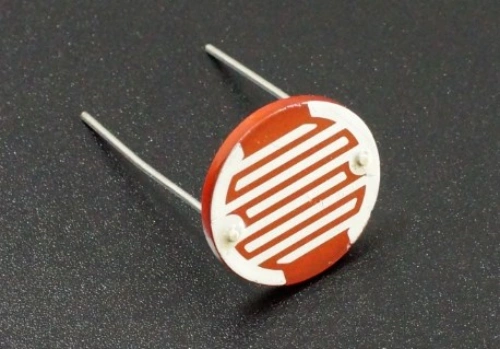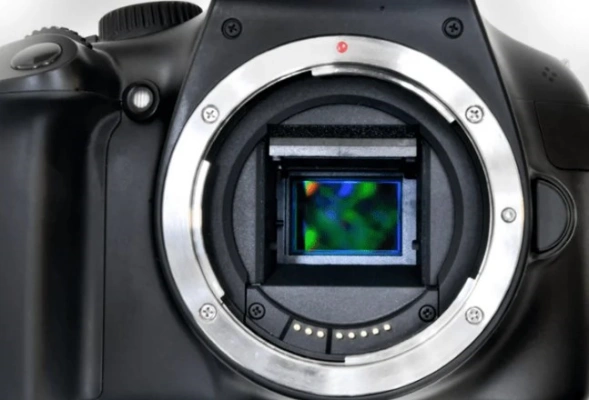OUTLINE:
Introduction of LDR: What Does LDR Stand for
 146
146LDR is the abbreviation of Light-Dependent Resistor. Photoresistor or Light-Dependent Resistor is a special resistive element, as its resistance will change with the change of light intensity. This characteristic makes LDR popular, for it has been widely used in a variety of scenarios, such as detecting the intensity and brightness of ambient light, or as analog sensors or switches for ambient light control. If you want to know more about LDR, just read on.

Image Source: Protosupplies
Detailed Answer: What is a LDR (Light Dependent Resistor)
LDRs are usually made of semiconductor materials such as cadmium sulfide, selenium sulfide, aluminum sulfide, lead sulfide, and bismuth sulfide. When these materials are exposed to specific wavelengths of light, their resistance values rapidly decrease. And this is because the light will produce carriers to participate in conduction, under the action of the applied electric field, the electrons will run to the positive electrode of the power supply, and the holes will run to the negative electrode of the power supply, which causes the rapid decrease of resistance value of the photoresistor.
In practical applications, LDR can be used to measure light intensity, control light and realize photoelectric conversion. For instance, under dark conditions, the resistance value (dark resistance) of the LDR can reach 1~10M ohms, while under strong light conditions (100LX), its resistance value (bright resistance) may only be several hundred to thousands of ohms. In addition, the sensitivity of the photoresistor to light (that is, the spectral characteristics) is very close to the response of the human eye to visible light (0.4~0.76μm), which means that the light that the human eye can feel may cause the change of resistance value of the photoresistor.
In general, a photoresistor is a helpful electric device that can change its own resistance value according to the intensity of light, and it has significant applications in many fields.
Working principles and features of LDR
The working principles of LDR is based on its internal photoelectric effect. Electrode leads are installed on both ends of the semiconducting photosensitive material, and the LDR is encapsulated in a tube shell with a transparent window. In order to increase sensitivity, the two electrodes are often made into a comb. Materials used to manufacture photoresistors are mainly semiconductors such as metal sulfides, selenides and tellurides. Usually, a thin photoresistor and comb ohm electrode are made on the insulating substrate by coating, spraying, sintering, etc., and the lead is connected and packaged in a sealed shell with a light transmitting mirror to avoid moisture affecting its sensitivity.
When the incident light disappears, the electron-hole pair generated by photon excitation will recombine, and the resistance value of the photoresistor will be restored to its original value. And if there is an adding voltage to the metal electrode at both ends of the photoresistor, there will be a current through. When exposed to a certain wavelength of light, the current will increase with the increase of light intensity, so as to achieve photoelectric conversion. As LDR has no polarity, which is purely a resistance device, it can be used with both DC voltage and AC voltage. Besides, the conductivity of a semiconductor depends on the number of carriers in the conductor band.
In the dark environment, the resistance value of LDR is very high; When its exposure to light and the radiation energy is large enough, the electrons in the band gap of the photoconductive material are excited by photons, whose energy is greater than the band gap width ΔEg, and jump from the valence band to the conduction band, which increases the holes in the conduction band and decreases the resistivity. When the light shines on the LDR, as the photoconductor is an intrinsic semiconductor material with the strong light radiation energy at the moment, the electrons in the valence band of the photoconductive material will be excited to the conduction band, so that the electrons in the conduction band and the holes in the valence band will increase, resulting in the conductivity of the photoconductor.
In short, LDR realizes the correlation of light intensity and resistance value through photoelectric effect, which plays an important role in light control, light measurement and photosensitive applications.

Image Source: robocraze
Application Examples of LDR
A light-dependent Resistor (LDR) is a component that uses the principle of the change of resistance value of a semiconductor material under light to detect and control. And the following examples are some practical application scenarios of LDR.
Cameras and photoelectric sensors
LDR can be used to adjust the speed of the camera, control the exposure time, image enhancement and other relevant functions. For example, in some types of cameras, the photoresistor can automatically adjust the aperture size based on the brightness of the ambient light for the best shooting results.

Image Source: Valerio Pardi/Shutterstock.com
Precision instrument and equipment
Light-dependent resistors are widely used in microscopy, fluorescence detection in medical diagnostic equipment, optical density detection, and can also be used to monitor intensity, control circuits and so on. For instance, in medical diagnostic equipment, LDR can be used to measure the optical density of a sample to help doctors determine the condition of the patient.
Home appliance
LDR is also widely applied in light control products, such as automatic lamps, smart curtains, etc. As in a smart curtain system, a LDR can sense the brightness of the ambient light and automatically open or close the curtain.
Security and monitoring systems
Photoresistor can not only be used to measure light intensity, satellite navigation signal strength, etc., but also to detect the state of public facilities (such as whether the street lamp is working normally), car dashboard lighting and other aspects. For instance, in some security monitoring systems, LDR can be used to detect the brightness of ambient light, and if the brightness falls below a certain threshold, the system automatically triggers an alarm.
3 Ways To Adjust The Sensitivity Of LDR
The sensitivity of a LDR can be adjusted in a variety of ways, and the following tips are some common methods to achieve its greater efficiency.
Firstly, it is suggested to change the length or cross-sectional area of the LDR. The sensitivity of a photoresistor is largely dependent on its physical size and length. Therefore, the longer the photoresistor or the larger the cross-sectional area, the higher its sensitivity.
Secondly, use signal processing circuits. Signal processing circuits can convert changes in the LDR output into processable electrical signals, such as voltage or current signals, thereby improving the sensitivity and accuracy of the photoresistor.
Last but not least, it is wise to use a potentiometer or simply apply bias voltage or current to adjust the sensitivity. By changing the position of the potentiometer or providing appropriate bias voltage or current, the resistance value of the photoresistor can be changed, thus improving its sensitivity.
The above methods can be used to adjust the sensitivity of the LDR, but the specific choice should be determined according to the practical application environment and needs.
Final Verdict
All the above are some must-know introductions of LDR, including its working principles, practical applications and effective ways to adjust its sensitivity. In general, LDR is so widely used that its advantages of high sensitivity and fast response of light intensity are worthy of further investigation and innovation .

Disclaimer: The views and opinions expressed by individual authors or forum participants on this website do not represent the views and opinions of Chipsmall, nor do they represent Chipsmall's official policy.

share this blog to:

